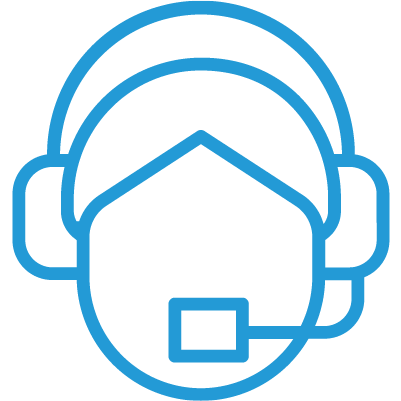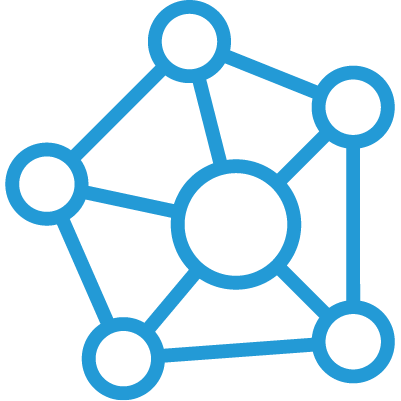
The Ultimate Guide to Measure Call Center Quality Assurance in Call Center Services
BPO plays a critical role in today’s globalized economy. They act as the primary point of contact for customer interactions, handling a wide range of inquiries, support requests, and sales-related activities on behalf of client companies.
Quality service is of utmost importance in BPO call centers for several reasons. It directly impacts customer satisfaction, which leads to loyalty and positive word-of-mouth. Quality service upholds the client company’s brand reputation and fosters customer retention and repeat business. Overall, prioritizing quality service ensures customer service quality assurance, contact center quality management, and brand reputation, improved retention, reduced costs, and driven business growth.
What is Call Quality Measuring?
Call quality measuring to the process of assessing and evaluating the performance of customer service calls. The main objectives are to ensure high-quality customer interactions, improve customer service, identify areas for improvement, and maintain compliance with service level agreements. This process includes call monitoring, scoring and evaluation, feedback and coaching, performance reporting, and continuous improvement.
Call Center Quality Parameters in BPO
1. Average Handling Time (AHT)
AHT is a key performance metric used to measure the efficiency and productivity of call center agents. AHT refers to the average time an agent spends handling a customer interaction, including the time spent interacting with the customer and any related after-call work. It helps organizations assess their staffing requirements, set performance targets, and identify opportunities for process improvement.
How to improve AHT?
- Provide comprehensive training to agents to enhance their skills and knowledge.
- Streamline call handling processes to eliminate unnecessary steps and tasks.
- Analyze call flow to identify areas for improvement.
- Equip agents with a comprehensive knowledge base and tools for quick access to information.
- Regularly monitor agent performance and provide feedback and coaching.
- Implement real-time assistance features for agents to seek help when needed.
- Foster a culture of continuous improvement and encourage agent input.
- Balance AHT with other important metrics like customer satisfaction and first call resolution.
2. First Call Resolution (FCR)
FCR is a measure of call quality in BPO call centers. It refers to resolving customer issues or inquiries during the initial call, without the need for follow-up or subsequent calls. A high FCR rate indicates efficient handling of customer concerns and prompt delivery of effective solutions. Tracking FCR involves analyzing data on call reasons, agent actions, and customer feedback. Improving FCR leads to increased customer satisfaction, reduced call volumes, improved efficiency, and cost savings.
How to improve FCR?
- Provide comprehensive agent training.
- Ensure easy access to up-to-date knowledge bases and resources.
- Optimize call routing systems to direct calls to the right agents.
- Monitor and coach agents for continuous improvement.
- Analyze customer feedback to identify areas for improvement.
- Continuously refine call center processes for efficiency.
- Implement quality assurance measures and regular audits.
- Introduce performance incentives for high FCR rates.
3. Service Level
Service level refers to a performance target that measures the percentage of incoming calls answered by live agents or handled within a specified timeframe. It represents the level of service expected by customers. Monitoring service levels helps assess call center performance, measure customer satisfaction, and identify areas for improvement.
How to improve service level?
- Optimize workforce management
- Enhance agent training
- Implement call routing and queuing systems
- Monitor and analyze performance metrics
- Provide real-time feedback and coaching
- Leverage technology solutions
- Foster a positive work environment
- Continuously improve processes
4. Call Abandonment Rate
Call abandonment rate is a call center performance metric used to measure the percentage of calls that are terminated by callers before reaching a live agent or completing their purpose. It indicates the efficiency of the call center and customer satisfaction. A high abandonment rate suggests issues like long wait times. By monitoring and reducing this rate, call centers can improve customer experience by optimizing staffing, and enhancing self-service options.
How to improve CAR?
- Efficient staffing and scheduling
- Reduced wait times
- Enhanced self-service options
- Modern call center technology
- Comprehensive agent training
- Continuous monitoring and improvement
5. Customer Satisfaction (CSAT)
Customer Satisfaction (CSAT) is a key metric in call center quality assurance used in BPO call quality measurement. It assesses how satisfied customers are with their interactions with call center representatives. CSAT is measured through post-call surveys and ratings, with higher scores indicating higher satisfaction. Monitoring CSAT helps BPOs improve customer service, identify areas of improvement, and deliver better customer experiences.
How to improve CSAT?
- Provide comprehensive training to call center representatives.
- Implement a robust quality assurance program.
- Analyze customer feedback and survey responses.
- Focus on efficient and effective issue resolution.
- Encourage personalized customer service interactions.
- Leverage technology solutions for process optimization.
6. Net Promoter Score (NPS)
Net Promoter Score (NPS) is a widely used metric to measure customer satisfaction and loyalty in various industries. It is commonly employed to evaluate call quality and the overall customer experience during interactions with call center representatives. In essence, NPS measures the likelihood of customers recommending a company or its services to others. It is based on a simple question: “On a scale of 0 to 10, how likely are you to recommend our company/service to a friend or colleague?”
The NPS provides a concise and standardized measure of customer sentiment and helps organizations identify areas for improvement and measure their customer service performance over time.
How to improve NPS?
- Train and empower call center representatives
- Foster a customer-centric culture
- Monitor and analyze customer interactions
- Implement customer feedback mechanisms
- Emphasize first-call resolution
- Continuously measure and track NPS
- Leverage technology for improved customer experience
7. Customer Effort Score (CES)
Customer Effort Score (CES) is a call center quality assurance measure used to gauge customers’ ease or difficulty while interacting with call centers. It is assessed through customer surveys asking them to rate the effort required to resolve their issues. A low CES score indicates an effortless experience, suggesting efficient systems and processes. A high CES score highlights areas for improvement, allowing companies to enhance customer satisfaction. CES helps measure call quality and informs decision-making for better customer experiences.
How to improve CES?
- Streamline processes to minimize steps and actions.
- Provide comprehensive training to call center agents.
- Enable omnichannel support for seamless customer interactions.
- Personalize interactions based on customer history and preferences.
- Proactively communicate to address potential issues or provide updates.
- Continuously gather and act on customer feedback.
- Monitor CES scores and other metrics to track progress.
- Foster a customer-centric culture within the organization.
Benefits of Call center quality assurance metrics
Measuring and tracking call center quality assurance metrics are crucial for success in a customer service operation. Quality assurance metrics provide valuable insights into the performance and effectiveness of the call center, allowing organizations to identify areas of improvement and make informed decisions to enhance customer satisfaction, agent performance, and operational efficiency.
It offers several benefits, including
- Improved customer satisfaction
- Increased agent performance
- Enhanced operational efficiency
- Consistency
- Compliance
- Informed decision-making.
These contact center quality assurance metrics provide insights into areas of improvement, allowing organizations to optimize their processes, train agents effectively, meet regulatory requirements, and make data-driven decisions to deliver exceptional customer service.






